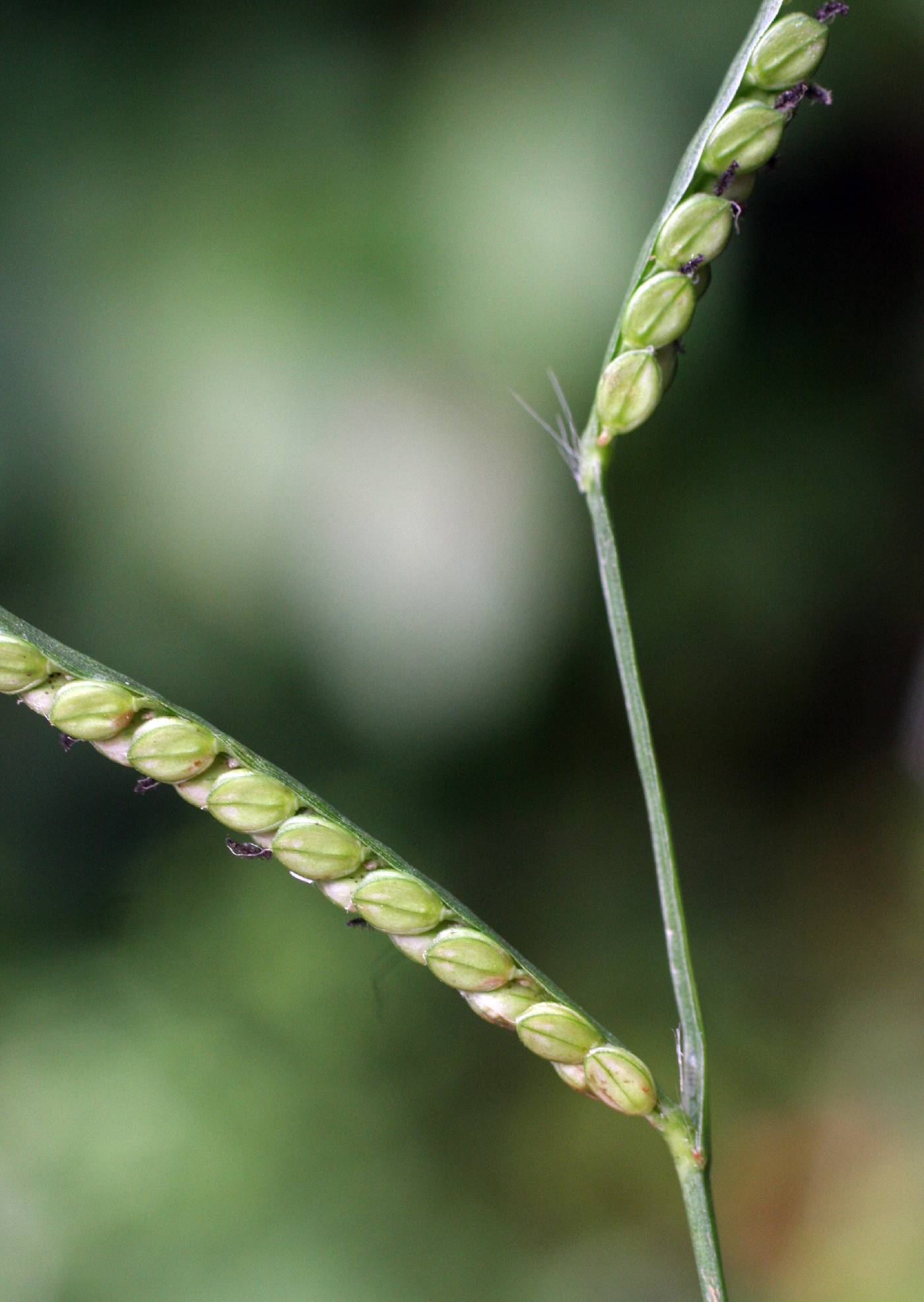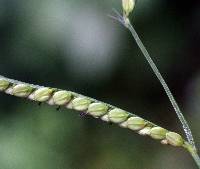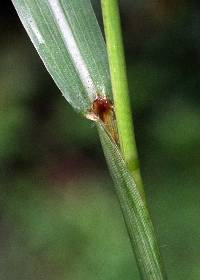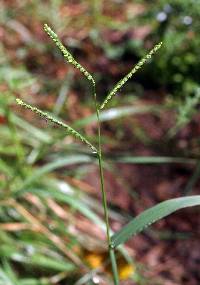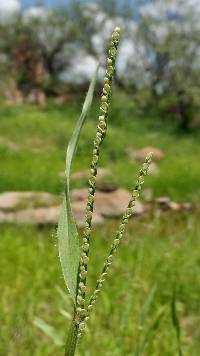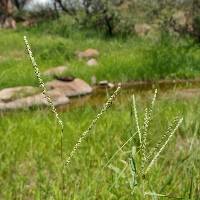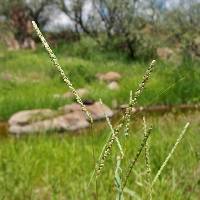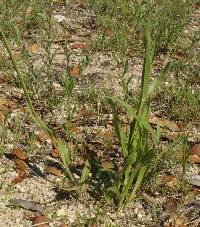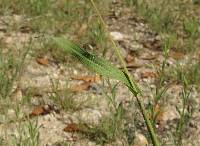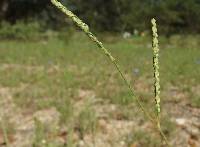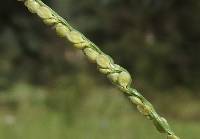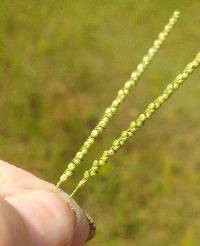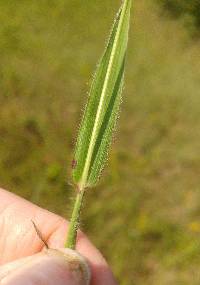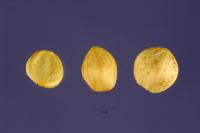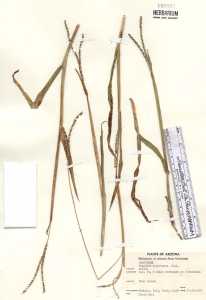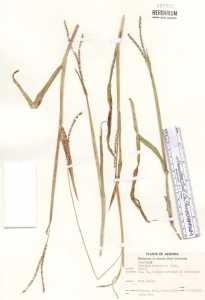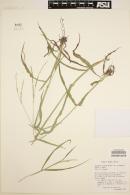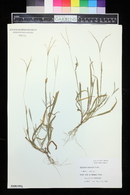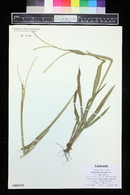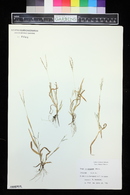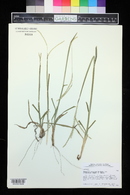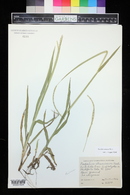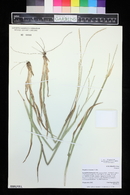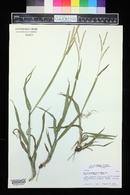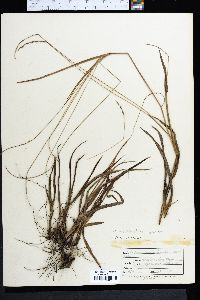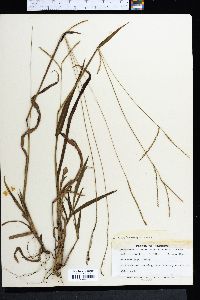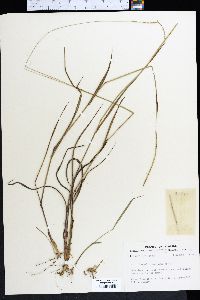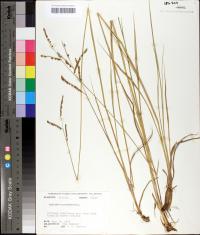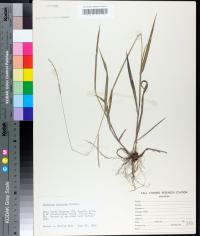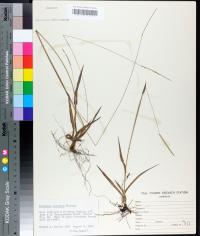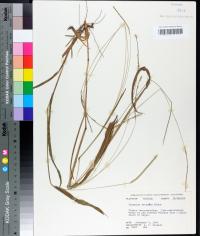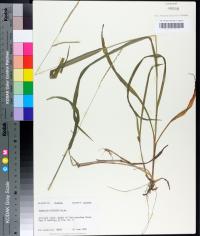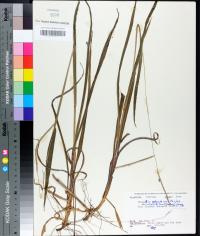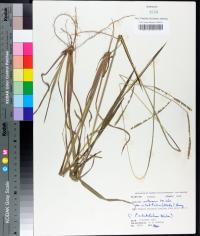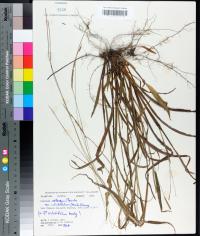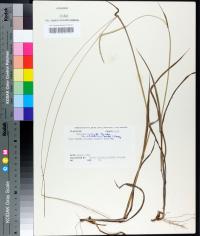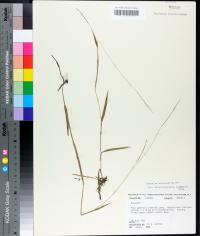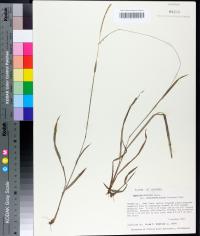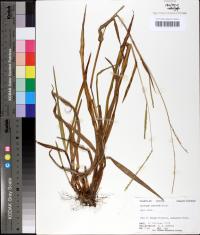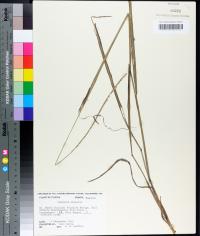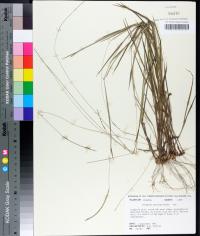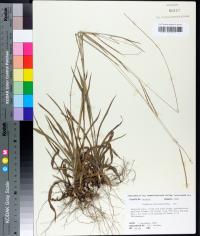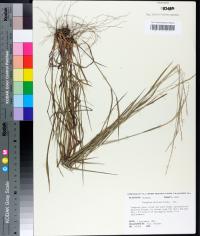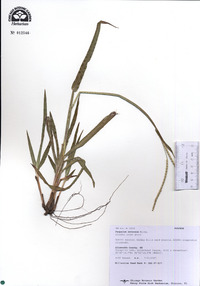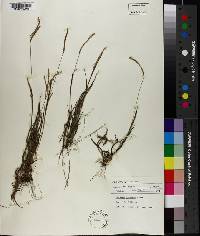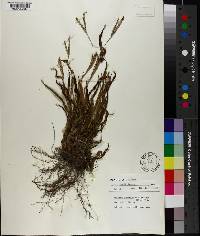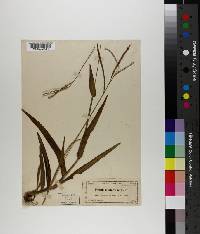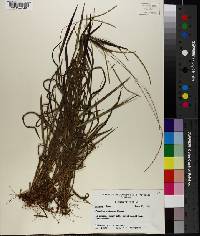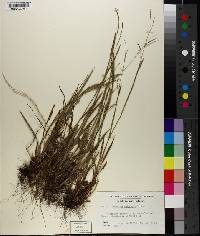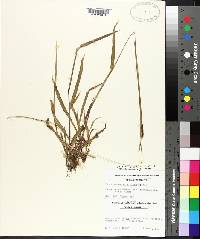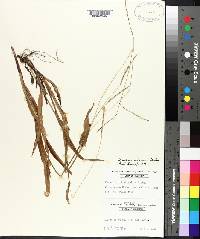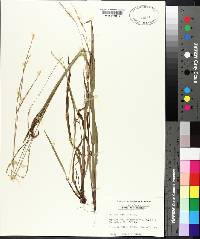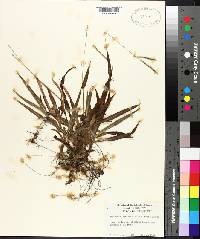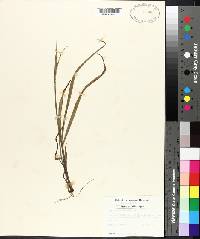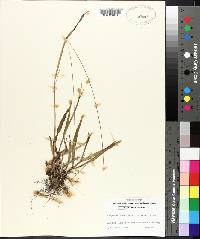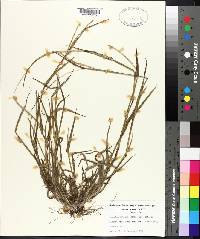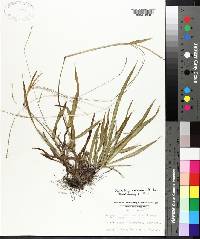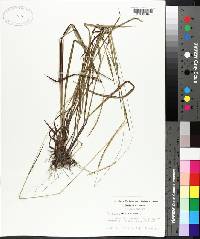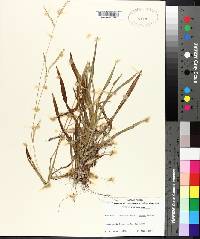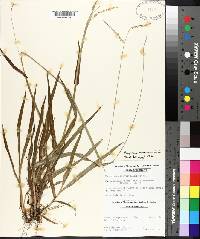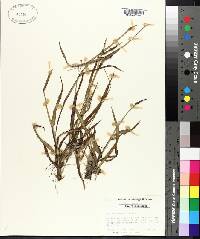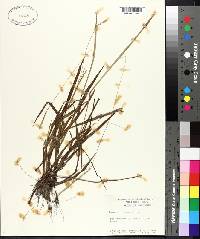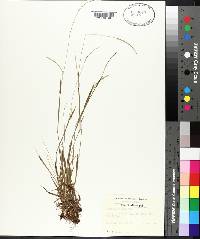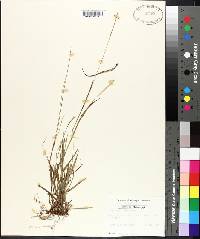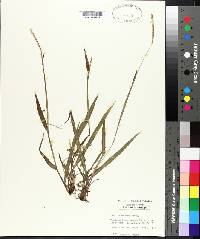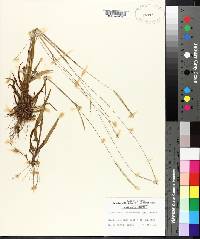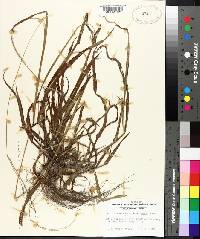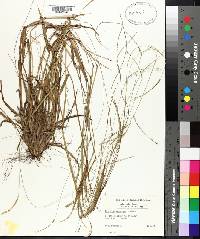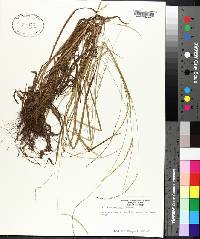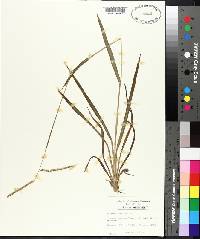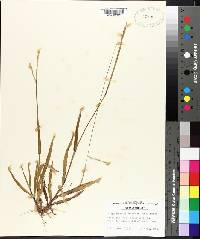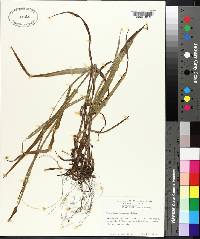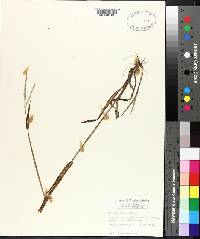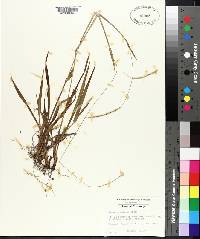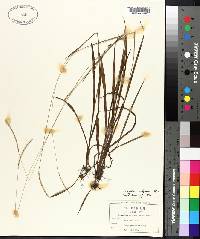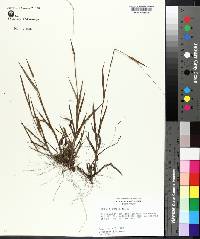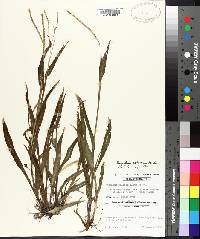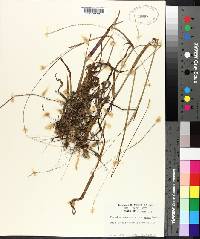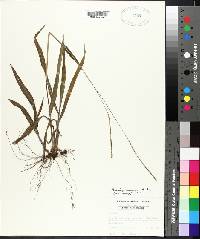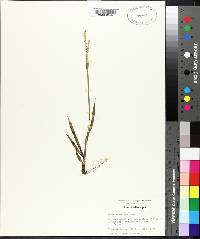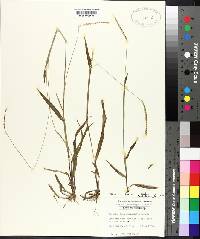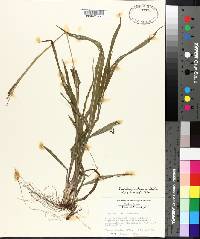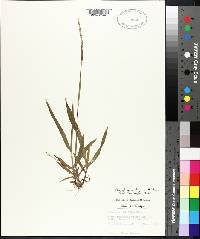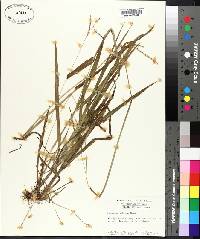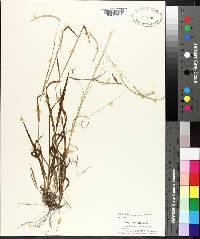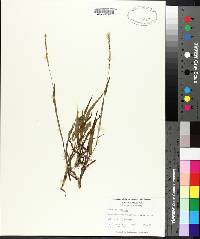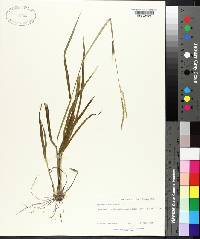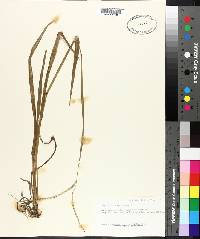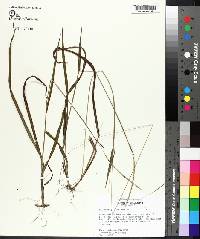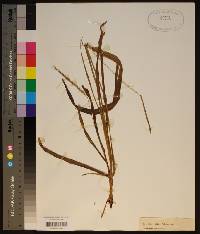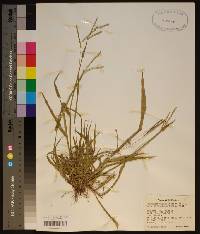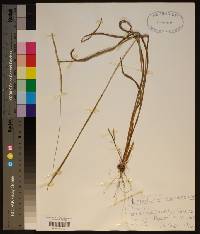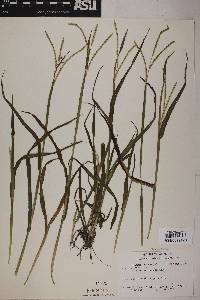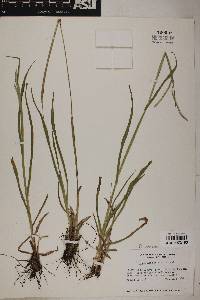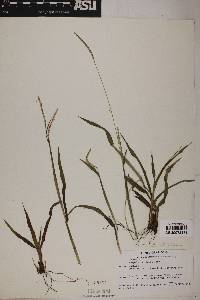
|
|
|
|
Family: Poaceae
Slender Crown Grass, more...thin paspalum, fringeleaf paspalum, narrow paspalum, sand paspalum
[Paspalum blepharophyllum, morePaspalum chapmanii , Paspalum debile Michx., Paspalum epile , Paspalum propinquum Nash, Paspalum separatum Shinners, Paspalum setaceum var. calvescens Fern.] |
Plants perennial; cespitose or shortly rhizomatous. Culms 25-110 cm, erect, spreading, or prostrate; nodes glabrous or pubescent. Sheaths glabrous or pubescent; ligules 0.2-0.5 mm; blades flat, glabrous or pubescent. Panicles terminal and axillary, with 1-6 racemosely arranged branches, axillary panicles partially or completely enclosed by the subtending leaf sheath; branches 2-12(17) cm, ascending to spreading, often arcuate, terminating in a spikelet; branch axes 0.2-1.2 mm wide, glabrous, sometimes scabrous. Spikelets 1.4-2.6 mm long, paired, imbricate, appressed to the branch axes, elliptic to obovate to ovate to orbicular, stramineous or brown. Lower glumes absent; upper glumes and lower lemmas glabrous or shortly glandular-pubescent, 3-veined, margins entire; lower lemmas lacking ribs over the veins; upper florets stramineous. Caryopses elliptic to suborbicular, white. 2n = 20. Paspalum setaceum is a variable species that grows east of the Rocky Mountains in the contiguous United States and Mexico. The following treatment summarizes the major patterns of variation within the species. Some specimens will be hard to place, particularly old herbarium specimens that have lost their color. Nine varieties grow in the Flora region: ciliatifolium, longepedunculatum, muhlenbergii, psammophilum, rigidifolium, setaceum, stramineum, supinum, and villosissimum. Perennial herb with short rhizomes or forming tufts 25 cm - 1 m tall Leaves: alternate, two-ranked. Sheaths open, sometimes hairy. Ligules to 0.5 mm long, membranous. Blades lance-shaped, flat, parallel-veined, sometimes hairy. Inflorescence: a branched arrangement of spikelets (panicle), terminal and axillary, bearing one to six spike-like branches. Axillary panicles completely or partially enclosed by a subtending leaf sheath. Branches ascending to spreading, often bowed, 2 - 17 cm long, with spikelets mostly arranged in two rows along one side of the branch. Branch axes 0.2 - 1.2 mm wide, sometimes rough. Fruit: a caryopsis, indehiscent, enclosed within the persistent lemma and palea, white, elliptic to nearly orbicular. Culm: upright or prostrate or spreading, 25 cm - 1 m long, round in cross-section, hollow. Nodes sometimes hairy. Spikelets: paired, overlapping, arranged along one side of the inflorescence branch, appressed to the branch axis, bearing two florets, straw-colored or brown, 1.5 - 2.5 mm long, plano-convex (one side flat, the other convex), orbicular to egg-shaped to reverse egg-shaped to elliptic. Glumes:: Lower glumes absent. Upper glumes nearly equal to lower lemmas, rounded at the apex, three-veined, sometimes shortly glandular-hairy, membranous. Lemmas:: Lower lemmas nearly equal to upper glumes, rounded at the apex, three-veined, sometimes shortly glandular-hairy, membranous. Upper lemmas clasping the paleas, straw-colored to brown, convex, smooth to slightly wrinkled, with rolled-up margins on the upper surface. Paleas:: Lower paleas rudimentary or absent. Upper paleas straw-colored to brown, smooth to slightly wrinkled. Florets:: Lower florets sterile. Upper florets bisexual, straw-colored. Anthers three. Stigmas red. Similar species: No information at this time. Habitat and ecology: No information at this time. Occurence in the Chicago region: native Etymology: Paspalum comes from the Greek word paspalos, a type of millet. Setaceum means bristle-like. Author: The Morton Arboretum FNA 2003, Gould 1980, Kearney and Peebles 1969 Common Name: thin paspalum Duration: Perennial Nativity: Native Lifeform: Graminoid General: Tufted to shortly rhizomatous perennial with stems 25-110 cm, erect, spreading or prostrate, nodes glabrous or pubescent, sheaths same, base hard and knotty. Vegetative: Blades flat, ciliate with long hairs on margin; ligule a short membranous truncate collar. Inflorescence: Terminal and axillary panicles with 1-6 racemosely arranged branches, axillary panicles partially or completely enclosed by the subtending leaf sheath; branches 2-12 cm, ascending to spreading, terminating in spikelet; branch axes less than 1 mm wide, glabrous, sometimes scabrous; spikelets suborbicular 1.5-2.5 mm long, paired, imbricate, appressed to the branch axes, stramineous or brown; lower glumes absent, upper glumes glabrous or shortly glandular pubescent with 3 veins and entire margins. Ecology: Found on dry sandy soil below 4,000 ft (1219 m); flowers June-September. Notes: Distinguished by its having both terminal and axillary panicles. Ethnobotany: Used as a valuable forage crop. Etymology: Paspalum is from the Greek paspalos for millet, while setaceum means bristled. Synonyms: Numerous, see Tropicos Editor: SBuckley, 2010 Culms tufted, prostrate to erect, 3-10 dm from short, knotty rhizomes; herbage variously glabrous or puberulent or long-hairy; lvs 3-20 mm wide, racemes 1-4; spikelets usually paired, 1.4-2.5 mm, three-fourths to fully as wide, variously elliptic-obovate to obovate or suborbicular, glabrous or finely villosulous or with minute, capitate hairs, often brown-dotted; glume 2- veined or obscurely 3-veined; sterile lemma 2- or 3-veined, the midvein developed or not; 2n=20, 40, 50. Dry or moist, open or lightly wooded places, often in sandy soil; N.H. to Fla. and the W.I., w. to Minn., Nebr., Colo., and Ariz. Several ill-defined vars., 5 in our range: Gleason, Henry A. & Cronquist, Arthur J. 1991. Manual of vascular plants of northeastern United States and adjacent Canada. lxxv + 910 pp. ©The New York Botanical Garden. All rights reserved. Used by permission. From Flora of Indiana (1940) by Charles C. Deam ...... Two varieties may be recognized in Indiana. Deam (1929): This species is most commonly found in pastured fields and pastured woodlots which I believe accounts for much of the variation in harbarium specimens. Plants that have been grazed all summer will produce more shoots, and it appears that the later shoots are more pubescent. When a plant has been repeatedly nipped off it will have shorter leaves and shorter culms when in fruit. Also, it often happens that only the more or less prostate forms escape being eaten, which accounts for the prostrate forms, at least in part. Plants colected where there has been no grazing or trampling appear to be erect. |
|
|
|

